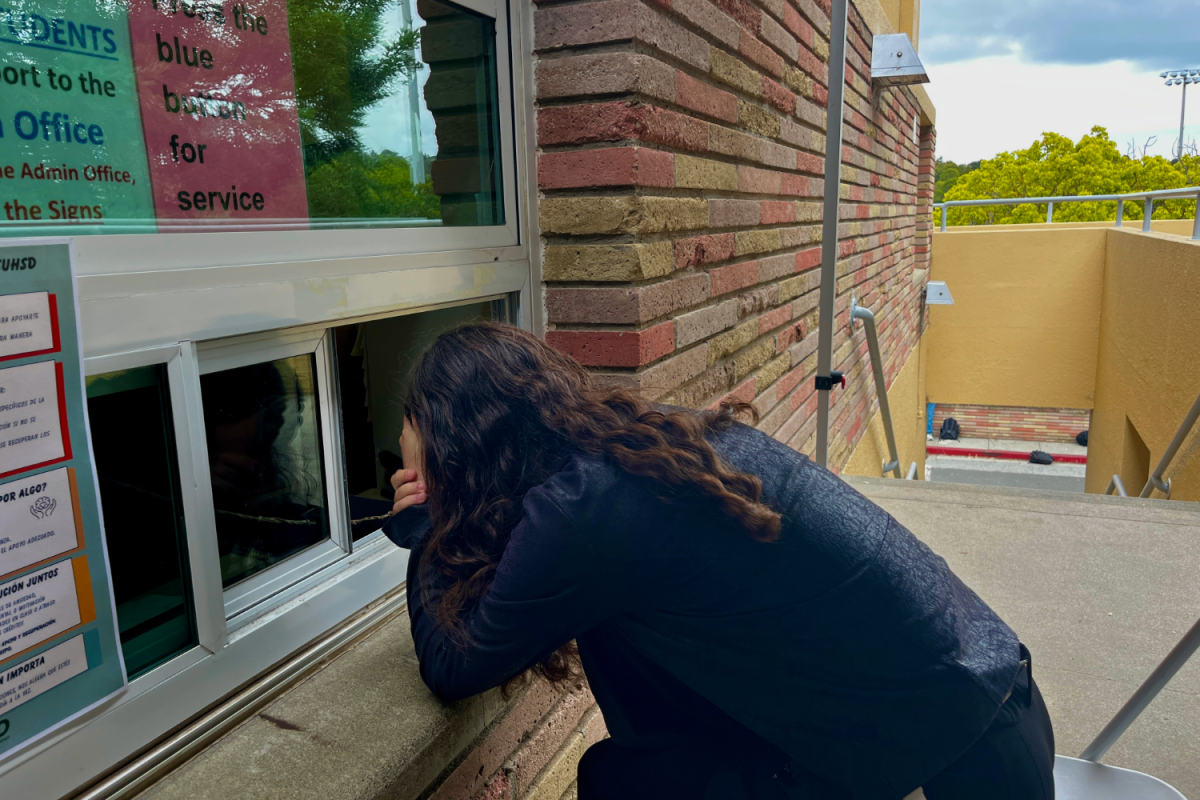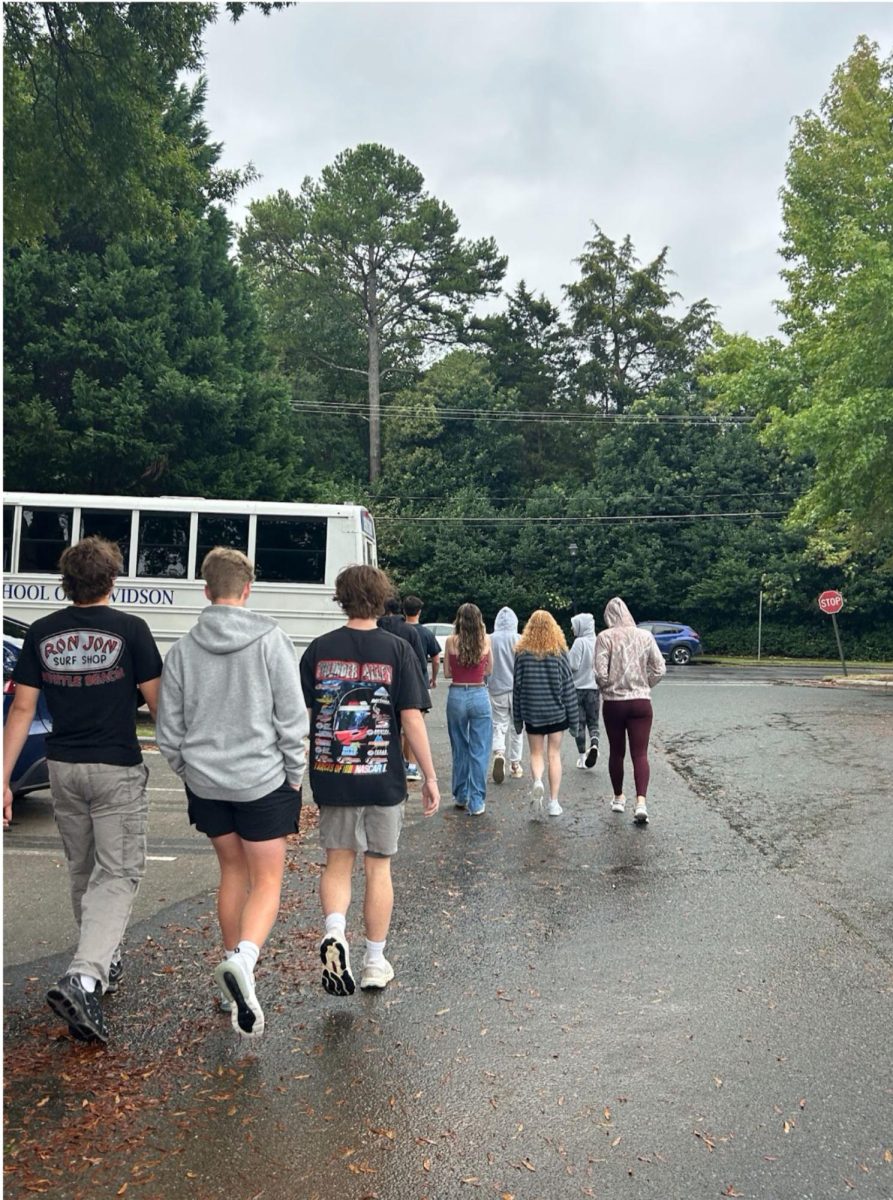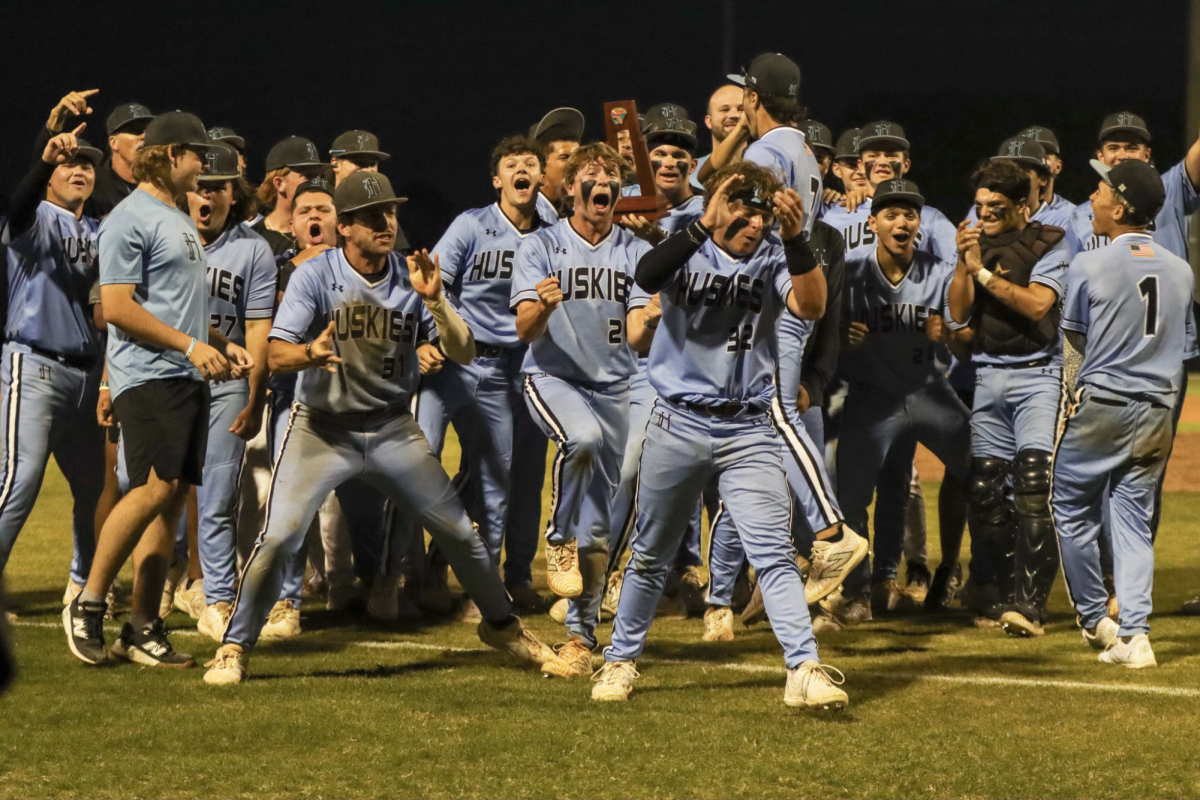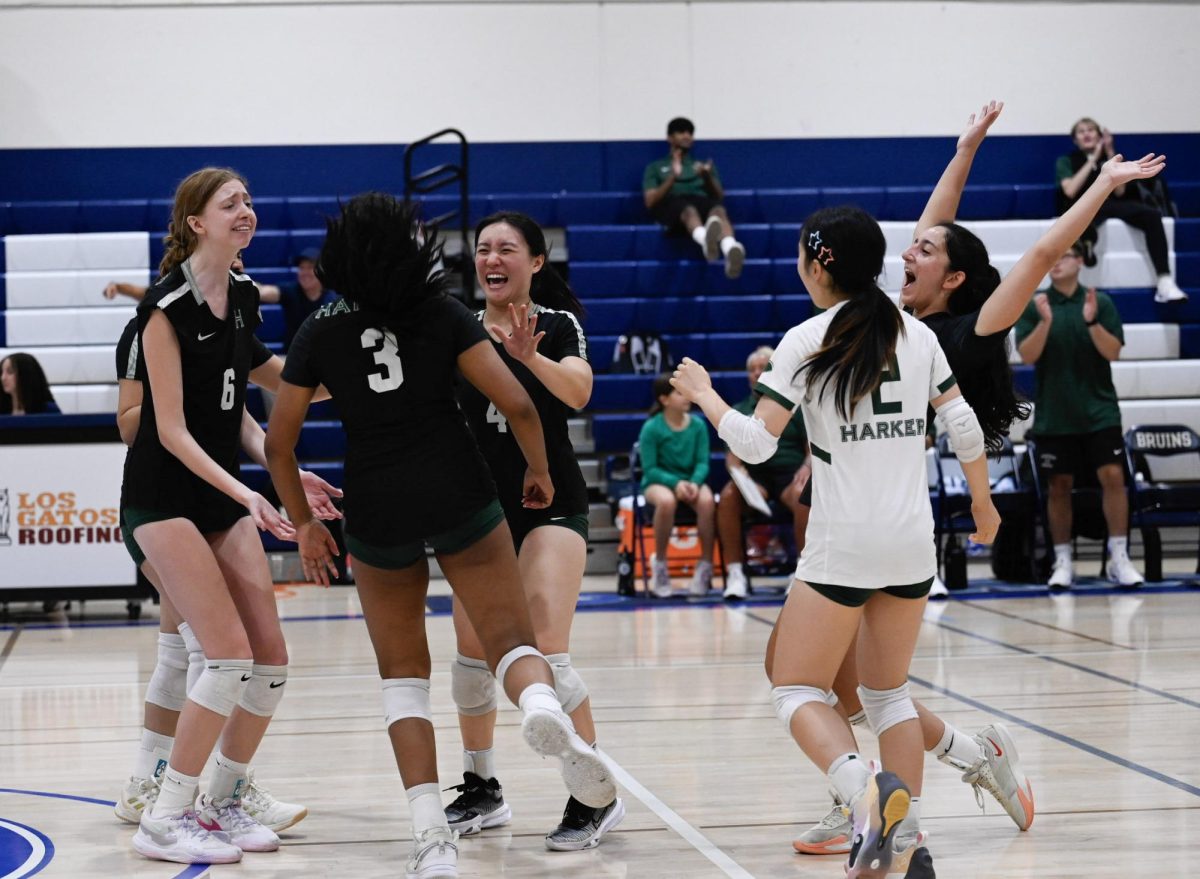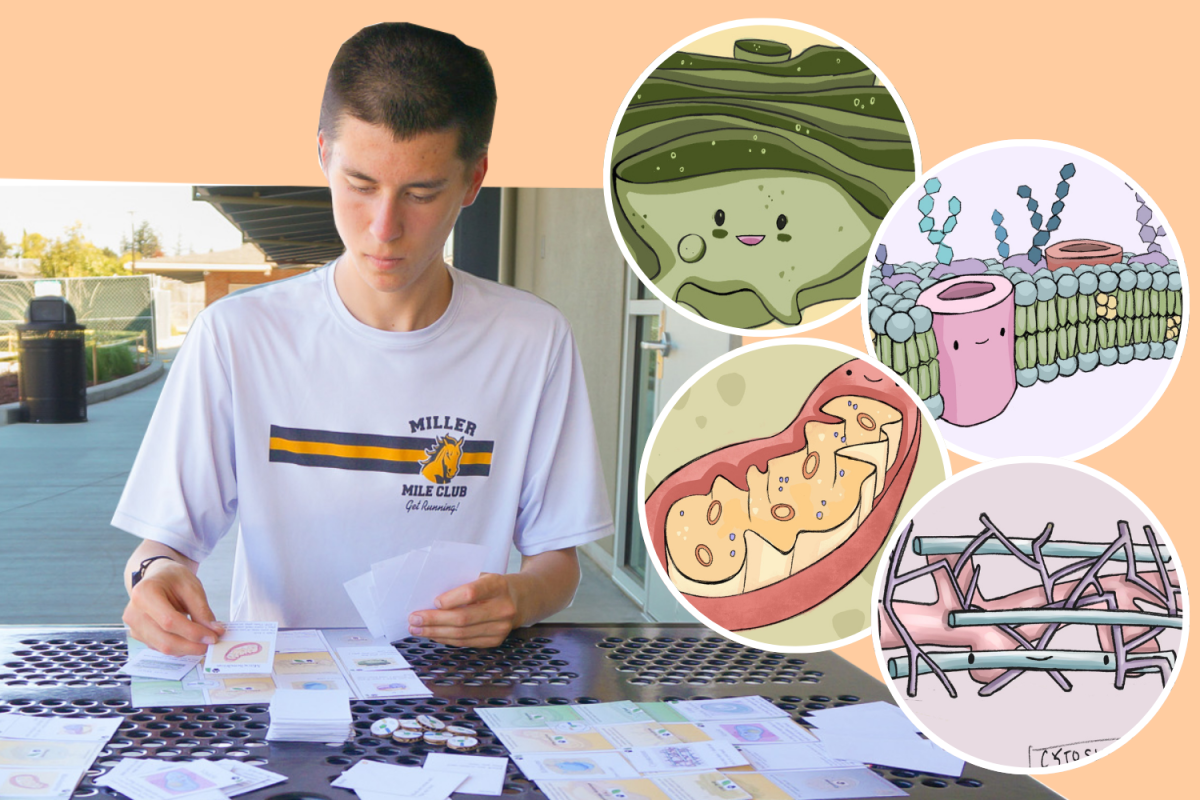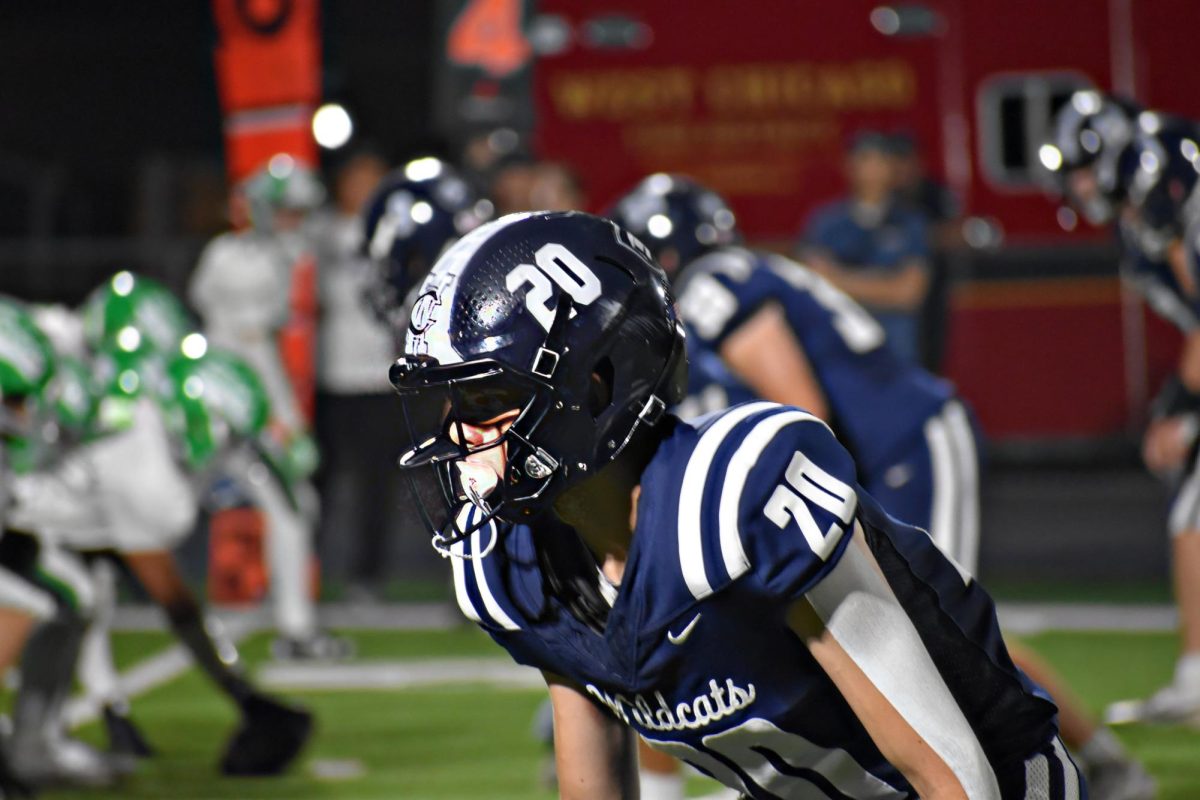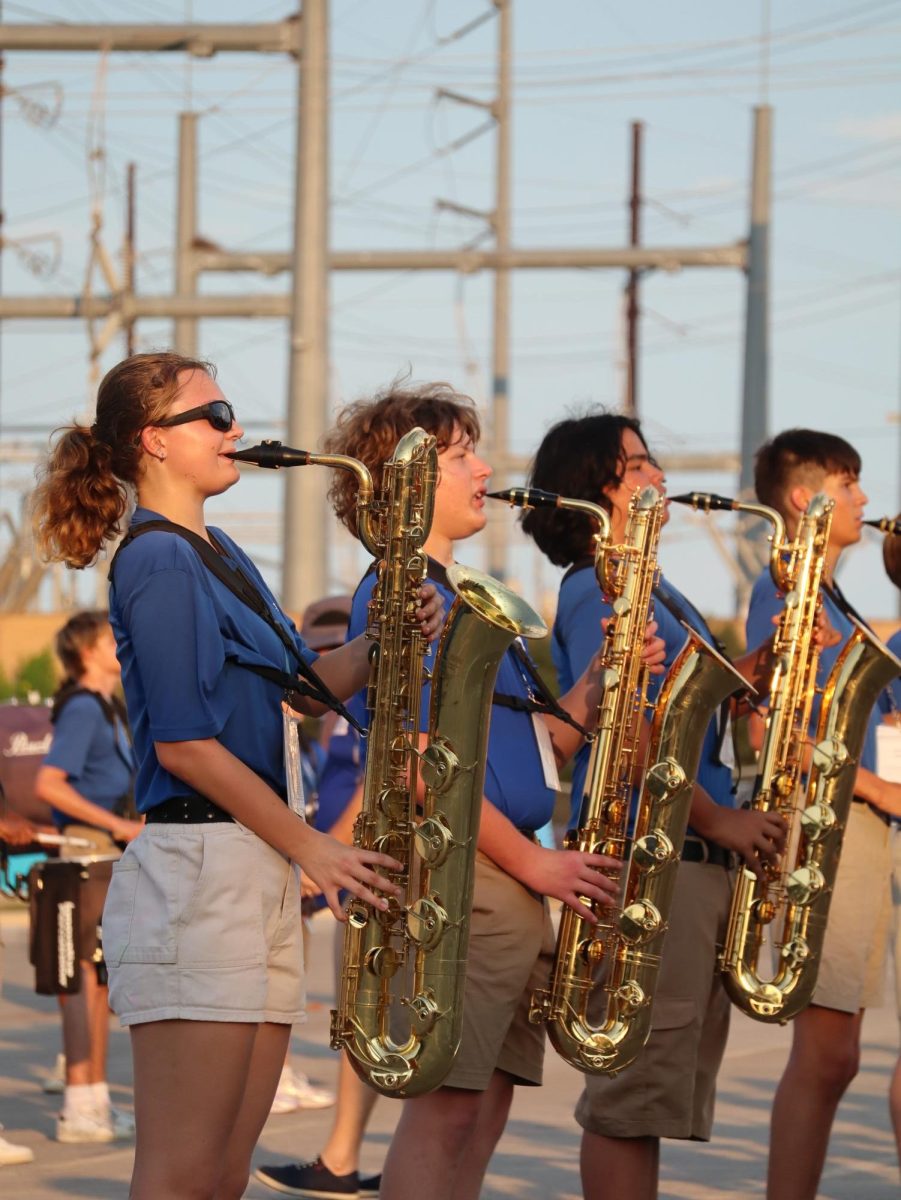Though typically associated with college and professional sports, the transfer portal is growing in use for high school sports as well. The school loses a lot of athletes to the transfer process, and students have found it more acceptable than ever to transfer for athletic reasons, leading to a change in team culture as a result.
In recent years, the high school transfer portal has become more of an open doorway.
The process
If a student wants to transfer to a school within the county, they can do so through the SCPS online application system. Officials at the county level review the application and determine if a student qualifies to transfer.
Senior football player Makiye Ellis, though zoned for Hagerty, attended Winter Springs High School for the first three years of high school. However, he decided to transfer to Hagerty for a chance at an improved team culture and greater support.
“I didn’t really know much about [the team] here,” Ellis said. “I was just hoping that they wanted everything that I wanted, and it turns out they did.”
The state and county open enrollment policies allow students to switch between schools with ease, and attend any schools that are below capacity, regardless of which school zone they fall into.
“As soon as the state created open enrollment, I think [it] tied FHSAA’s hands in restricting students from transferring schools,” baseball coach Michael Sindone said. “Once open enrollment became a right or a law, they were essentially forced to follow suit.”
Ideally, students would use these policies to access institutions with academics better suited to them, or career programs not offered at their current school.
“It is always a setup to create an opportunity for [student athletes] to participate,” athletic director and cross country coach Jay Getty said. “Whether it is [because] their school didn’t offer it, or they believe that this program is better than the program that they were currently in.”
FHSAA Policy 36 prevents coaches, athletes, volunteers or anyone else involved in school athletics from taking any steps to reach out to or “recruit” students for sports teams. This policy intends to balance the playing field for schools with different levels of funding, and would seem to secondarily reduce the amount of students transferring for purely athletic reasons.
However, many student athletes consider their sport a significant part of their future, and regard a high-level sports program similarly to how many would view an academic program not offered at their current school.
According to Getty, the number of students transferring to and from Hagerty for athletics tends to be about even, but from the perspective of a student or coach, it often does not appear that way.
All in all, there are seven different types of transfer processes that apply to students in different situations. FHSAA applies the term “transfer” to any student not zoned for the school they play for, (including homeschooled students who want to play a sport, and those attending a school without a certain athletics program), and students who apply to a school outside of their zone before freshman year.
“Everybody thinks we always have these transfers,” Sindone said. “A lot of kids come to us in eighth grade, so a lot of people think that Hagerty gets this guy or that guy. That’s not true. Mostly guys are here for the full four.”
Most people, however, would describe “transfers” as athletes who played for one team, then switched to play for another. And in that sense, Hagerty has been on the losing end for the past few years.
Volleyball players have come to expect a loss of four or five players a year. The cross country team saw some of their top performers leave the school before this season. Of course, students will always support those who join their team and resent those who leave, but the school has seen the scales tip toward the latter lately, especially as the transfer process increases in ease and use.
Why do student athletes transfer?
Oftentimes, students perceive other schools as having better opportunities for them, especially if they hope to play in college or major leagues.
The effort that a school makes to aid its players personally can be the tipping point for transferring. Ellis found that after he transferred, he had better access to chances to connect with higher level teams and consider his future in football.
“These coaches [at Hagerty] have been sending [me] these places to go,” Ellis said. “This weekend I went up to this college for a little visit. They’re sending my family stuff. At Winter Springs, I had to do everything myself.”
Hagerty’s connection to major leagues—especially in baseball—is no secret, and its reputation has drawn in its fair share of students.
“We’re not out there influencing kids,” Sindone said. “We follow Policy 36 to the letter. But for a kid to see that board, or walk into our facility and see the names on the outfield fence…of course I’m not naive to that.”
Students may also leave schools if they feel as though their abilities have not been put to good use, or they want the chance to prove themselves on a team that will offer them more playing time.
“Sometimes I think it’s just silly,” senior volleyball player Sofia Wattles said. “For our sport, volleyball, you don’t get recruited based off [your high school team]. It matters, but not for your future. So it’s kind of silly to transfer for just playing time.”
Despite Policy 36 prohibiting the practice, it is not uncommon for those involved in athletics to suspect other schools of recruiting team members.
“To an extent, [transferring has] gotten out of hand,” Wattles said. “Sometimes coaches will purposely recruit the players, or they’ll talk to them, try and get them to come over, guarantee them playing time and all that. I don’t think it’s following the rules, but they still do it.”
Often, it is extremely difficult for a student to refuse an offer put out for them, which is why the responsibility falls on coaches and representatives of a school’s program to refrain from recruitment.
“A lot of kids are transferring, and people think the worst,” Sindone said. “The student athletes get the bad rap in the media, [but] they’re not all transferring because they didn’t get their way. Some of them are transferring because the coach sat down and said, ‘Hey, I have [something] better.’”
And no one can deny the influence from professional and college leagues. If social media—and media in general—has done anything to the sports world, it has made it infinitely more visible.
High school students constantly hear stories of their favorite college football players getting more playing time at different schools, or professional baseball players moving halfway across the nation to accept a new contract. Whether consciously or subconsciously, students take in these stories, and many reflect them in their own behavior.
“More kids see it on TV and social media, essentially guiding it their way, and they transfer,” Sindone said. “Seeing, ‘Oh, well, this quarterback can’t get what he thought he was going to get, and he leaves.’ And then that trickles down to high school.”
The issue
High school athletes—despite behaving more like older players—do not fund their schools. Football games (the most well-attended sporting event at most schools), while sometimes profitable for the program, do not hold quite the sway over the school budget that they would at a college level. But the culture of transferring has spread anyway, without the same reasoning behind it.
When too many students transfer, coaches can see lowered morale and team spirit. Getty warns students against switching schools without fully thinking through the decision.
“Because they see it up above, [student athletes] assume that it’s okay [to transfer] and don’t realize the ramifications,” Getty said. “Ultimately, all the transfers do is erode the team culture that you’re trying to establish as a coach. It’s kids in, it’s kids out. Just sends the message that nothing is really important.”
Students and teams alike can suffer serious consequences due to the increased accessibility of the transfer process. If a student shows too little dedication to their teams, or seemingly transfers without reason, some college coaches may view them as too flaky for recruitment.
“If you’re going to act like the college kids on the high school level, you’re probably not going to buy into a program,” Getty said. “You’ve already shown when it doesn’t go your way, you’re going to pick up and go somewhere else.”
And of course, teams as a whole have to make adjustments to the loss of players.
“Sometimes they’re good players, and they transfer out because of academics,” Wattles said. “It’s a hard hit on the team, because they were a key part. But we usually find a way to figure it out.”
Coaches have also had to adjust to the expectation that their team may not stay consistent throughout the years or even the season. For many, this means putting off certain training exercises, or not spending as much time training JV athletes (who some see as more liable to leave).
“You’ll see kids that will play on a baseball team in the Fall, and then they’ll play on a different baseball team in January,” Sindone said. “They’ll do their Fall off-season conditioning with their team, and then all of a sudden, [after] winter break, they don’t come back. So I’m seeing coaches hold off on future plans and some of the things that we used to do. I still try to [do] as much as I can with the hope that [the] majority of our kids stay.”
The bright side
Both teams and individuals can benefit from the ease of the transfer process when a student does find a school that suits them best.

“We’ve had kids leave us and go to other schools and make the roster at the other school, and that’s great to see,” Sindone said. “There’s no hard feelings there. We get to play those schools, and we go give that kid a hug, shake his hand and let him know that we’re so proud of him, even though he’s not playing for us anymore.”
Many people involved in athletics also report teams making a consistent effort to accept and welcome new arrivals, or finding resiliency in recovering from the loss of a key athlete.
Whether for better or worse, many predict the amount of students transferring between schools to only increase.
“[Transferring to Hagerty] helped me want to be a better person, [and] work harder for my team,” Ellis said. “Be better for them, not just for myself.”
This story was originally published on Hagerty Journalism Today on September 26, 2025.

